by Tom
Share
by Tom
Share
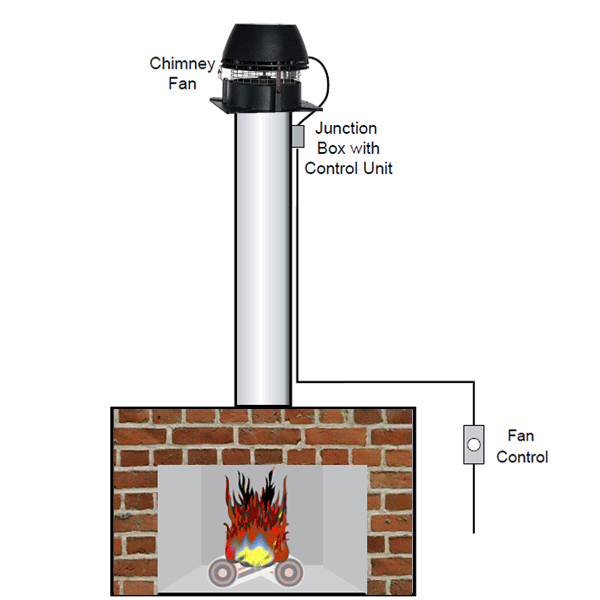
Chimney fans work by employing mechanical venting to overcome fireplace and chimney gravity drafting deficits. When they are turned on, chimney fans, attached atop the chimneys, create a partial vacuum in chimneys . Exhaust gases from the wood or gas fireplace rush into that vacuum and flow up the chimney and out the sides of the vents in the fan.
Difference Between Gravity Venting and Mechanical Venting
Open-fired hearing appliances like fireplaces can be vented by gravity venting or mechanical venting.
Gravity venting is also called natural venting. To create a draft, gravity venting uses the difference in gravity of cold vs. warm air. The disadvantages of gravity venting alone is that it is very sensitive to indoor and outdoor temperatures, barometric pressure, wind, and airflow obstructions within and around the chimney and house.
Mechanical venting uses a fan or blower in-line or at the termination point to create a proper draft. The mechanical venting can overcome any problems of gravity venting and can adapt to changing conditions such as exterior winds or temperatures. An Exhausto – Enervex chimney fan is a powerful type of mechanical venting.
How Chimney Fans Work
A chimney fan is installed on the top of the chimney, over the flue. It is wired to the home’s 110 volt electrical system and managed by use of a variable speed control that is like a dimmer switch. The switch is normally installed close to the fireplace so its operator and see the results of the adjustments he or she makes. When the fan is turned on, it lowers the air pressure in the chimney, creating a partial vacuum. The exhaust gases rush into the vacuum and flow out of the vents in the sides of the fan.
The homeowner can regulate the ‘pull’ of the fan by adjusting the variable speed control switch. This clever feature allows one to make the flames burn higher or lower, at will, by regulating the speed of the fan.
The chimney fan, by the way, also serves as a chimney cap, keeping rain and snow out of the chimney. The screen sides prevent critters such as birds, squirrels, and raccoons from entering your home via the chimney and fireplace.
Due to the wiring required, we recommend chimney fans be installed by a licensed electrician.
What Fireplaces Are Compatible with Chimney Fans
Now that you know how chimney fans work, is your particular fireplace and chimney compatible with the use of a chimney fan?
Chimney fans will work on the following types of fireplaces and chimneys:
- Wood-fired fireplaces with single or multiple flue;
- Gas-fired fireplaces with single or multiple flues or with dampers;
- Wood stoves and fireplace inserts;
- Single or multiple-sided fireplaces;
- Outdoor fireplaces; and
- Pizza ovens.
Enervex Chimney Fans are Guaranteed to Work!
Enervex Chimney Fans come with a six-month money-back guarantee. If one does not solve your chimney draft problem, you can return it within six months and receive a complete refund. In addition, the Enervex Chimney Fans have a ten-year warranty against corrosion and a two-year warranty against defects in workmanship and materials.
Traditionally, knowledge based on teachings and experiences about selecting and burning firewood was passed along verbally. Often such information was put into a rhyming format to make it easier to remember. Thus were born firewood poems and firewood songs to address the question, “Which Firewood Burns Best?” As with most things passed from generation to generation, […]
Have firewood in your life? If you have a wood stove or a wood-burning fireplace, fire pit or fire bowl, you have probably heard some common sayings, sometimes found in rhymes and songs, about firewood. Some call them firewood Old Wives Tales or Old Husband Tales. How can you tell which one is a firewood fact or myth? Which […]
Usually when we think of a fireplace, we think of sharing it with friends and family. There is one type of fireplace, however, that is designed to enjoyed alone, in privacy: the bathroom fireplace. A bathroom fireplace is a personal and elegant indulgence. It is the ultimate for creating a spa-like retreat from the cares of the […]
If you burn wood in your fire pit, you have the makings of DIY fire pit log stump stool – the firewood logs themselves. From the most basic to the most clever, fire pit log stump stools capture the essence and simplicity of gathering around a fire. Here are directions for making a variety of DIY fire pit log […]
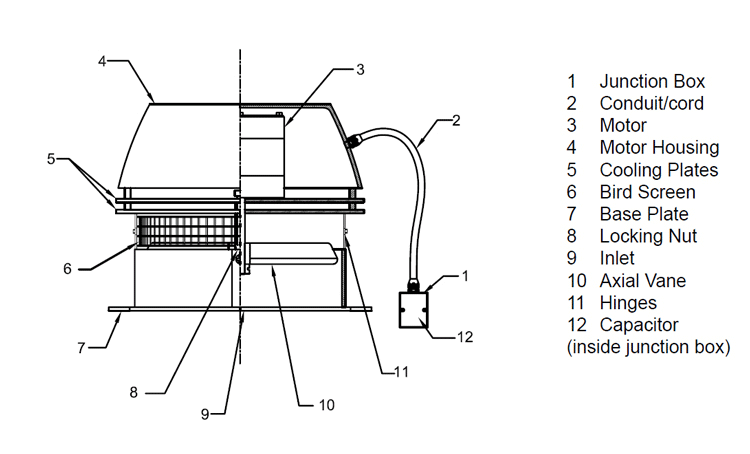
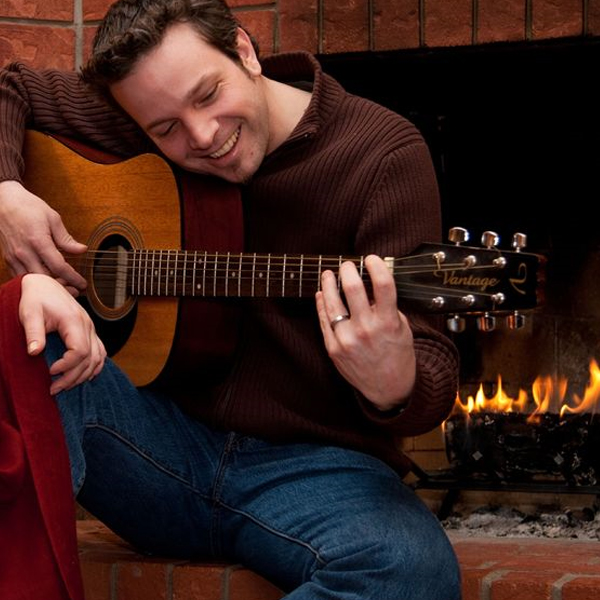
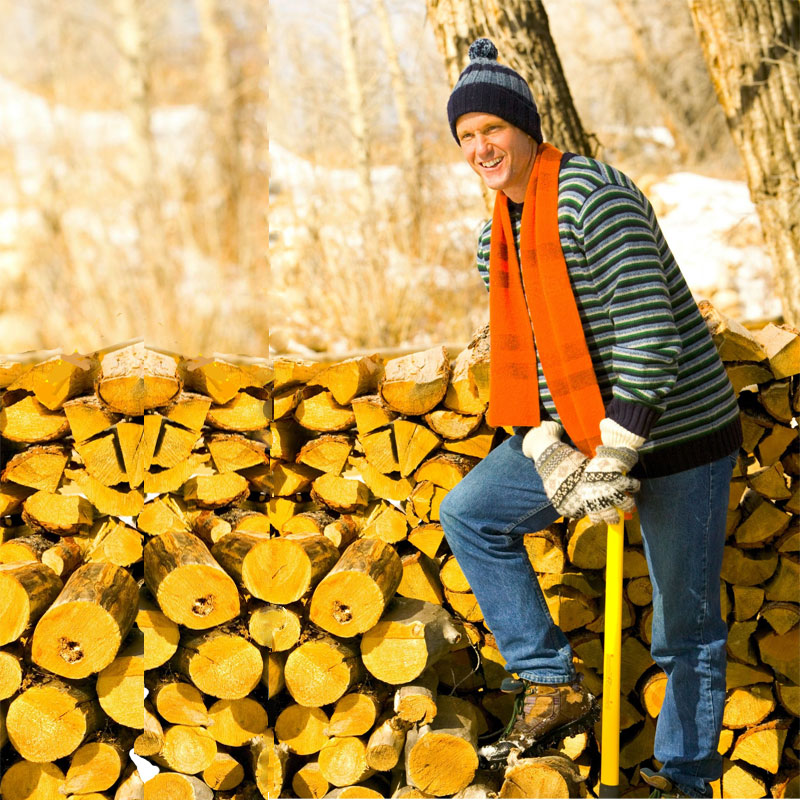
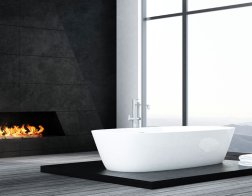
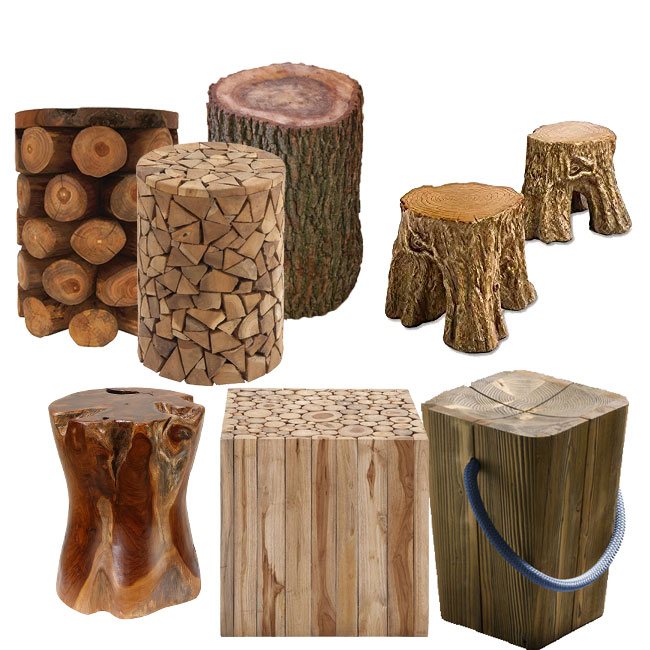
Does the 10-2 height rule still apply if a chimney is constructed with a chimney fan?
In some cases, Glenn, a chimney fan can be used if the 10-2 guidelines are not met.
Chimney fans
Does this fan have to run the whole time there is a fire in my wood stove. The only time I get smoke is when I open the door to add wood. I live off grid and produce my own power so it would be a great advantage to me to run the fan only when adding wood
No, Brian, a chimney fan does not necessarily need to run the whole time. If, however, you are getting smoke when the fire is going and you open the door to add wood, the flue is, therefore, already pre-warmed and drafting to the best of its ability. It sounds like it is only the wood stove door itself that is preventing smoke from entering your room. It does not sound to us like that flue is sufficiently drafting. Just as a properly drafting fireplace should send all the smoke up the flue (not into the room), a properly drafting wood stove should only barely smoke when you open it to add firewood. Good luck.
We have a house that was built in the 50’s the fireplace is very large,we had a chimney sweep come and inspect it and said it doesn’t draft enough to have a fire, there are 3 flues and they don’t look like they have been used much
Chuck, it is smart of you to bring in the professional chimney sweep to help diagnose the issue. Yes, it would certainly seem like a chimney fan would be the solution you need.
I have an outdoor stone fireplace that doesn’t draft well. Chimney too small for fireplace I think. I only use a few times a year so don’t want to spend much. Need some kind of heat proof fan at the top I guess.
What do you suggest?
Charles, if the chimney is too small, it may be more economical to replace the chimney than to use a chimney fan. We suggest you get at least two chimney professionals to take at look at your outdoor stone fireplace, to diagnose the specific nature of your issue, and, if appropriate, to give you an estimate on replacing or repairing the chimney.